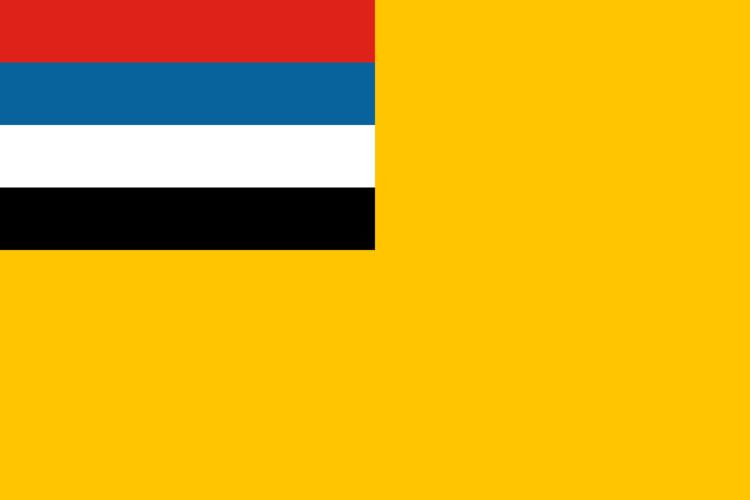Proportion 2:3 | Adopted March 1, 1932 | |
 | ||
Name National flag of Manchukuo. Name Manchukuo War Flag and Naval Ensign. Use War flag and naval ensign | ||
The flag of the now-defunct Empire of Manchukuo had a mustard yellow field with four horizontal stripes of different colors in the upper-left corner. The colors of the flag were based on the colors on the Five Races Under One Union flags used by the Beiyang government and the Empire of China. The flag is also similar to the flag used by the Fengtian clique. The flag was first established in Announcement of National Flag on March 1, 1932.
According to the Document of the Explanation of National Flag issued by state council of Manchukuo on February 24, 1933, the colours on the flag represent the four directions and center. The Study of Manchukuo National Flag published by state council of Manchukuo later also gave an representative based on Wu Xing.
The colours also represents five major peoples in Manchukuo:
